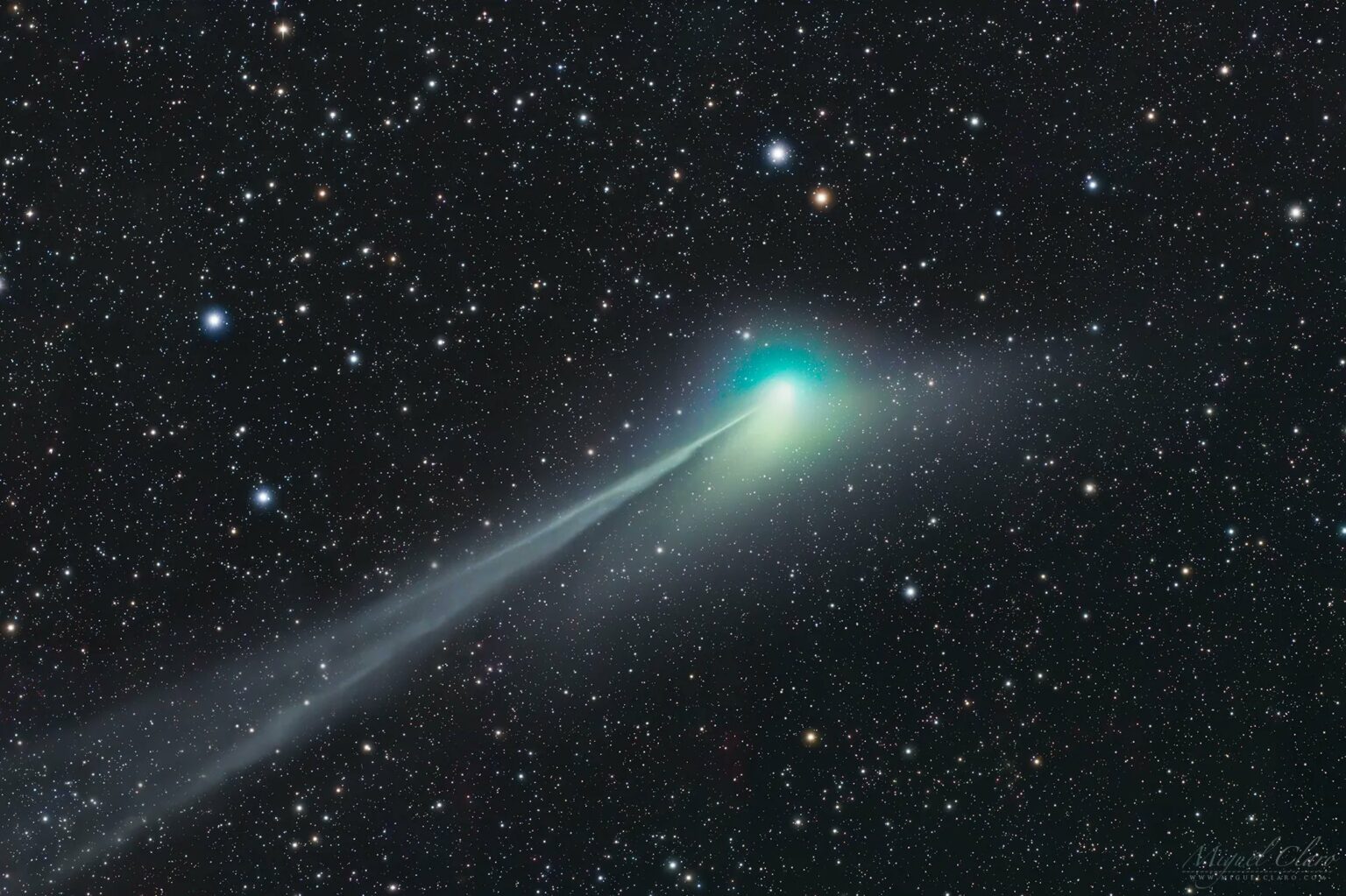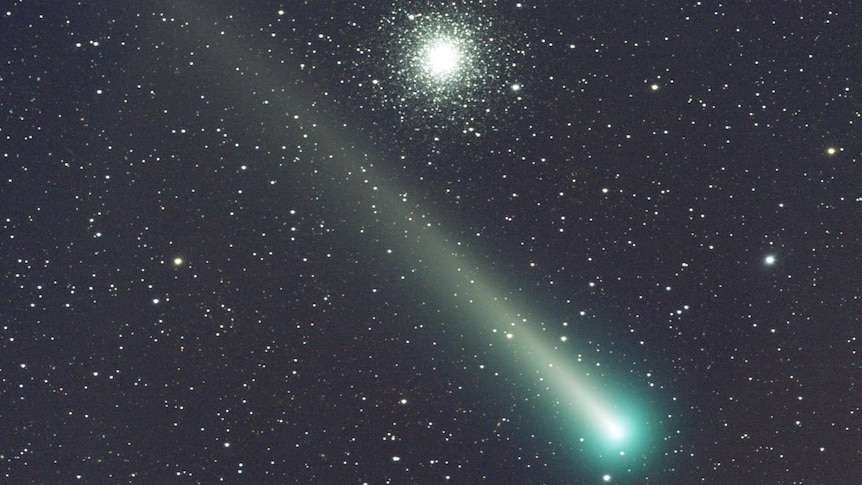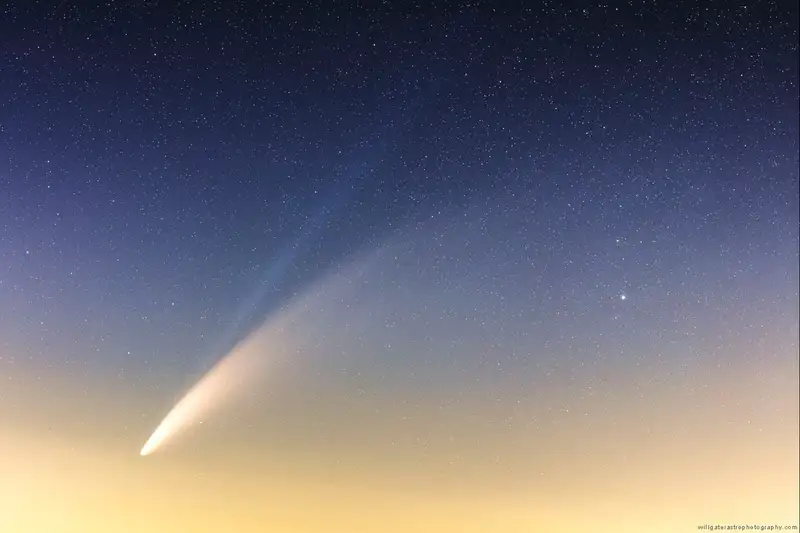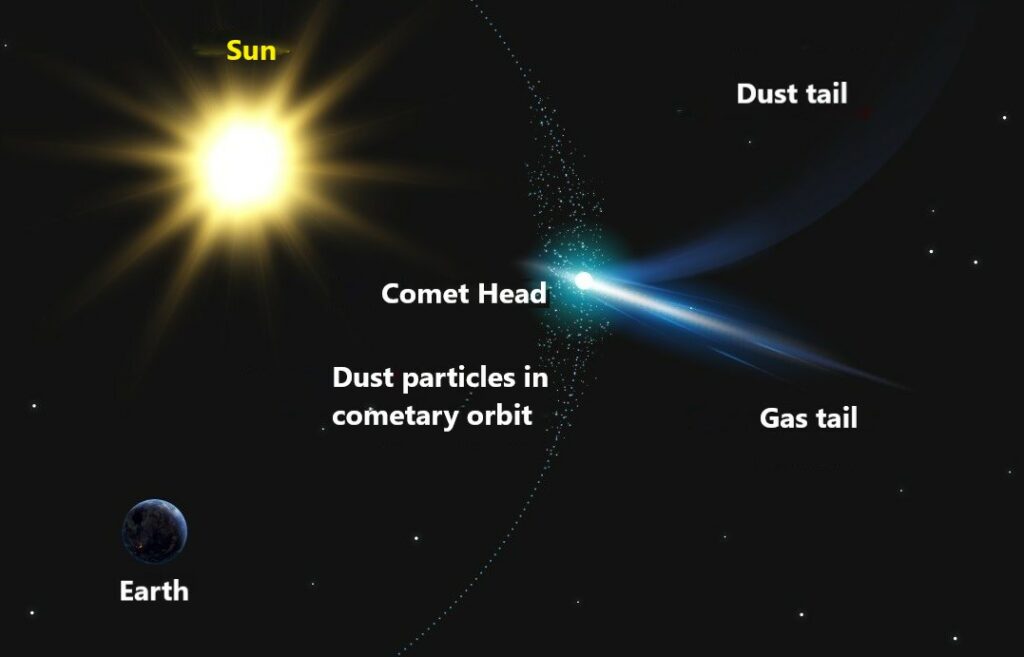On February 1, 2023, at 08:00 p.m. GMT+2, comet C/2022 E3 (ZTF) will be at the minimum possible distance from Earth equal to 0.2839 AU (42.5 million km). Some mass media have already dubbed this event “unique”. Of course, one can only welcome such an attraction of the attention of the general public to celestial phenomena. But is this particular event or is the comet so unique?
Every year, several dozen comets are observed in the earth’s sky. Almost all of them are available only to powerful astronomical instruments. But several of them can be seen with small amateur telescopes or binoculars, and one or two are usually visible to the naked eye. However, to do this, you need to wait for a moonless night and go further out of town, where there is no artificial lighting. At the same time, such comets look like faint hazy spots, and you need to know exactly where they are located in the sky in order to finally see them. Large bright “tailed stars” approach the Sun much less frequently, on average once every 8-10 years.

This is the kind of object “at the limit of the naked eye” that C/2022 E3 (ZTF) refers to. So in this respect, there is nothing unique about it. Yes, last year such bright comets were not observed in our latitudes. But this was just an unusual case.
“Green Comet”
Perhaps the uniqueness of comet ZTF is that it is “green”? For astronomers engaged in the study of these celestial bodies, this is also nothing unusual. The fact is that the composition of most cometary nuclei includes cyanide C₂N₂ — the simplest compound of carbon and nitrogen. Under the influence of sunlight, it actively begins to glow with a blue-green light. Also, during the decay of cometary organic matter caused by the ultraviolet radiation of our luminary, unstable molecules (free radicals) consisting of two and three carbon atoms are formed. They can exist for a long time only in the conditions of the cosmic vacuum and also emit in the green part of the visible spectrum. Therefore, there is enough “green colour” in the gas shells of comets located at a distance of one to three astronomical units from the Sun. For the ones that come closer to it, dust and volatile compounds begin to predominate in the coma, causing it to “turn yellow”. And the tail can be divided into dust and gas, and each of them will have its own color. Actually, C/2022 E3 (ZTF) already demonstrates something similar.
Close to the Earth
Is the approach of comet ZTF to our planet unique? By no means — “tailed stars” approach planets, including the Earth, quite often. Besides, last year none of them came so close to us, but on December 12, 2021, Comet Leonard (C/2021 A1 Leonard) flew at a distance of 0.233 AU (34.9 million km), at 7.6 million km less. Moreover, since its core had a larger size, it was noticeably brighter, and thanks to the peculiarities of the orbit, it moved faster across the sky. However, then this comet was located on the celestial sphere and was not very convenient for observations. C/2022 E3 (ZTF) at maximum approach will be close to the Polar Star, that is, for observers of the middle and high latitudes of the Northern Hemisphere, it will not fall below the horizon at all.

After passing near the Earth, comet Leonard moved further towards the Sun and on December 18, 2021, approached Venus at a distance of only 0.028 AU (4.2 million km). Comet ZTF passed perihelion on January 12, 2023. And it is now moving away from our luminary, so it no longer “threatens” any planet. On February 10-11, it will be visible from Earth less than 2° from Mars. In fact, in space, these celestial bodies will be separated by a solid distance of 0.539 AU (80.5 million km).
“Unique period”
There is also nothing extraordinary in the fact that some object of the Solar System has returned to its inner regions after 50 thousand years of “absence”. Comets are conventionally divided into two classes: short-period ones with periods of less than 200 years (their designations begin with a catalog number and a capital Latin letter “P”; (an exception is made for three “historical” comets) and all others. Among these “others”, the duration of one orbit around the Sun can vary quite widely: for example, the well-known comet Hale-Bopp, according to various estimates, it ranges from 2,365 to 2,520 years, and the second comet discovered by Klym Ivanovych Churiumov (C/1986 N1 Churyumov—Solodovnikov) has more than 12 thousand years. Therefore, the “fifty-thousand-year” period in this series is not something unusual.

But even this period for comet ZTF can already be considered “invalid”: under the influence of the gravity of large planets, it has accelerated and is now moving along an open hyperbolic trajectory to leave the Solar System forever. That is, after the current appearance, neither we nor our distant descendants will be able to see it. However, it is also impossible to say that such an “orbital perturbation” is unique — every year such things happen to several long-period comets. The exception is the ones that approach the Sun for the first time and fly in hyperbole from the very beginning.
Not unique, but rare
There is one interesting feature of comet ZTF that distinguishes it from most “tailed stars”: now it has two tails directed almost in different directions. This sometimes happens when the Earth is close to the plane of the comet orbit in such a way that the angle between the projections of the dust and gas tail on the celestial sphere for ground observers significantly exceeds 90°. In some cases, it can reach 180°, and then we see the so-called “anti-tail”. For this to happen, at least two factors must coincide — the specific position of the object in relation to our planet and the presence of two tails. Such coincidences really don’t happen so often.

In all other respects, from the point of view of astronomers who are constantly studying comets, C/2022 E3 (ZTF) is “unique” only within the current year: in 2023, not a single “tailed star” will come closer to us and will not become brighter. But this statement should not be taken categorically too. It is quite possible that a new comet will be discovered within a year, which will pass from us at a shorter distance. Or some of the already discovered ones will suddenly flare up and become clearly visible to the naked eye. For example, the short-period comet Holmes (17P/Holmes) did it in the autumn of 2007. That’s why cometary astronomy is interesting, because it is almost impossible to predict anything for sure. And the observations of these amazing small bodies of the Solar System always have a certain scientific value.
Follow us on Twitter to get the most interesting space news in time
https://twitter.com/ust_magazine
